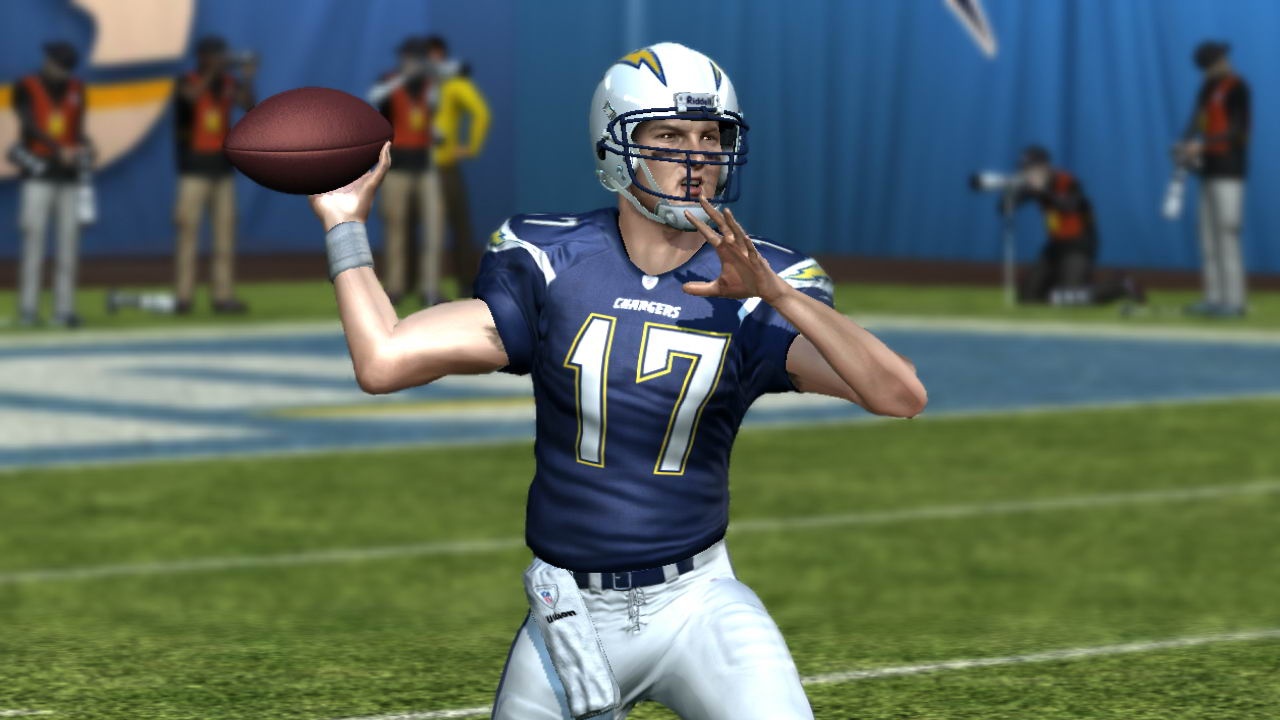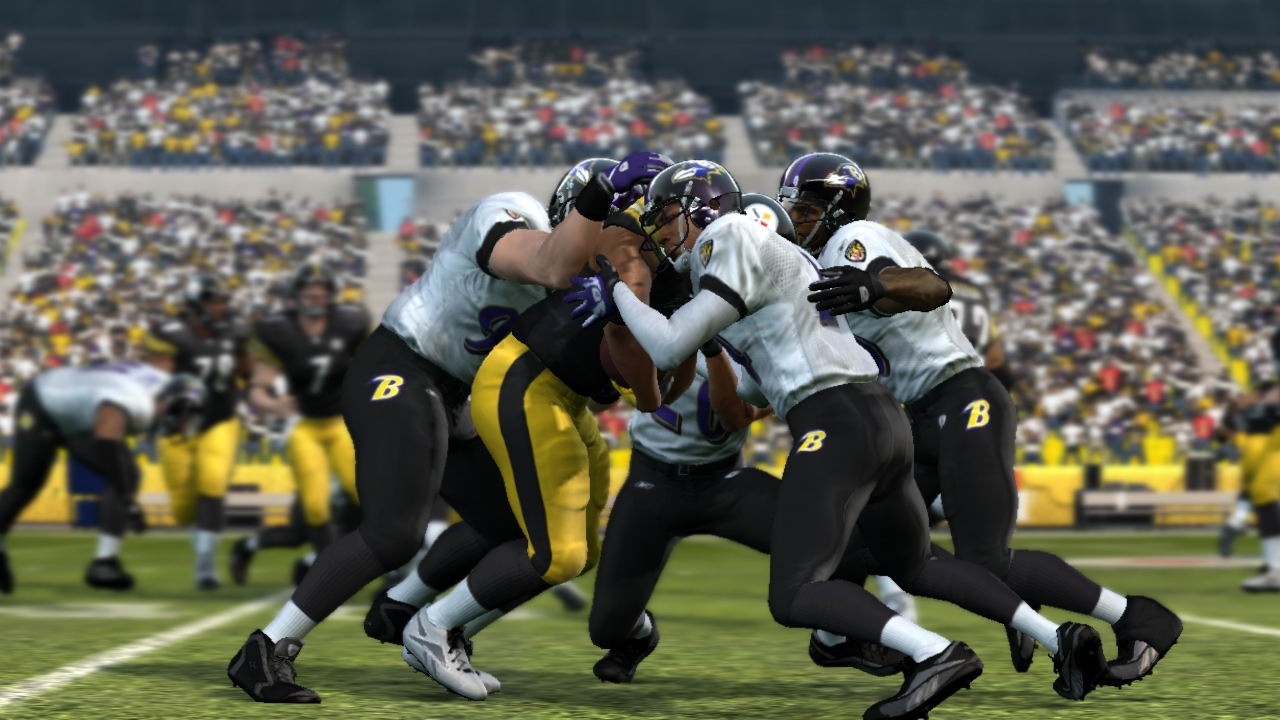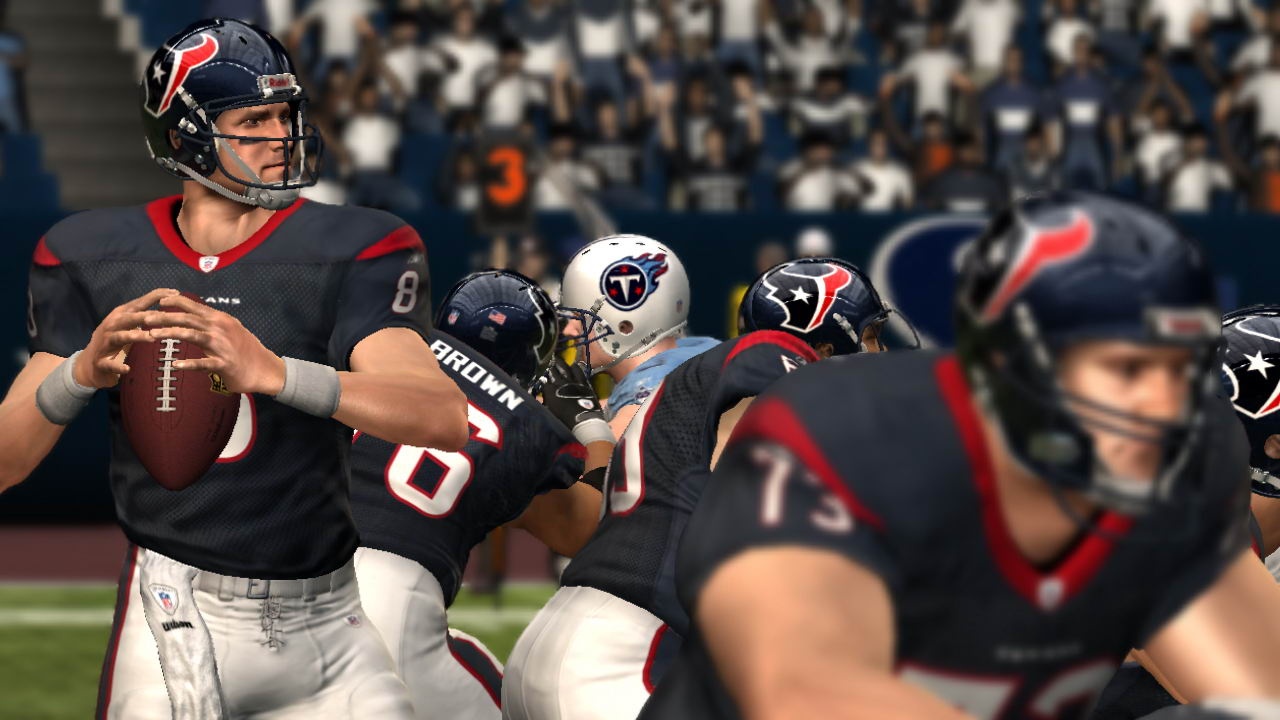Madden NFL 10 Hands-On
John Madden may be retired but the football game that bears his name is still going strong. We get our hands on with the latest build.
If you played the upcoming Madden NFL 10 side by side with its college football counterpart, NCAA Football 10, perhaps the starkest difference between the two would be the speed of the games. While NCAA seems to be running at the brisk pace you've come to expect from the series for the past couple of years, Madden NFL 10 has a more measured tempo on the field, one that is entirely intentional according to the game's developers. At EA's recent pre-E3 press event, we had a chance to try Madden 10 for the first time to see how the game pace, and the new additions to this year's game are coming along.

Now, don't take a slightly slower pace of gameplay to mean that Madden 10 is a sluggish game. We settled right in to the new tempo after just a few plays. If anything, the change in pace (developers told us that the game is around 5 percent slower at the default difficulty level) actually allows more casual Madden players to be a bit more poised in the pocket, go through their checks, and maybe even make a play or two they might have missed in last year's game.
As developers told us, part and parcel with the overall speed change are the changes made to player speed differentiation; that is, the performance difference between players on the lower end of the 40-yard dash and the Devin Hesters of the league. On the lower difficulty levels, slow players are much slower than their real-life counterparts--resulting in a larger discrepancy between average NFL players and elite speedsters. As the difficulty ramps up, however, those differences begin to flatten out, 40-yard times become more realistic throughout the entirety of the Madden 10 roster, and the difference between regular players and the elite, while still noticeable, becomes more realistic and balanced.
If you've been keeping up with Madden 10, you probably know about the "fight for the fumble" feature that is new this year. During our hands-on time with the game, we're happy to report that we got to try the button-mashing minigame (which has you rapidly mashing buttons as your players scramble to go after a loose ball on the ground). We're even happier to report that we played the minigame only once. While it might be tempting for the developers to toss in the fumble minigame an inordinate number of times per game according to the folks at EA Sports, you can expect to see it perhaps once per game, which sounds just about right to us.
Our hands-on demo of Madden included a "Madden moment" replay of the Super Bowl matchup between the Pittsburgh Steelers and the Arizona Cardinals. With just over two minutes to go in the game, the goal was to replicate the Steelers' dramatic fourth-quarter touchdown drive, which eventually won them Super Bowl XLIII. Though victory was on our mind, our main goal was to get a look at the new tackling animation system, dubbed Pro-Tak by the Madden team, to see how it affected not just the running game, but passing as well.
Running as Willie Parker, it was relatively easy to find holes in the defense, and the elusive back was tough to bring down one-on-one. In fact, we didn't see any of the nine-man gang tackles that the Madden team is promising, though admittedly we spent more time airing it out than we did bashing it up the middle. In fact, providing Ben Roethlisberger with a functional pocket to work in looks to be another benefit of the Pro-Tak technology.

The goal, it seems, is to prevent players from automatically dropping straight back and bombing the ball. To do that, the game takes control of the first few steps of your quarterback's dropback, which felt disconcerting at first, especially under heavy pressure. Nonetheless, with some patience, the pocket does eventually form around your QB; however, since a real pocket is a new concept in Madden, it's easy to panic in the pocket as your offensive linemen push coverage out to the sides. Still, even when the defensive players come at you, you'll have options as QB, including attempting to shed tackles by flicking left or right on the right analog stick. You can even throw the ball in mid-tackle; just don't be surprised if the ball leaves your hands like a dead duck.
If Pro-Tak is a big benefit for the offensive side of the ball, the new defensive assist button will be a boon on D, especially for Madden players who aren't necessarily Madden Bowl bound. By pressing the A button on the 360 controller (X on the PS3), you can let the CPU temporarily take control of your player. He'll execute his assignment as drawn up by the play, and you can take direct control of him at any time by simply letting off the button and moving him as normal. This feature is especially useful when playing as a defensive back; not only is that position more difficult to play effectively than a lineman or linebacker, but cornerbacks often line up offscreen at first, making it that much more difficult to stay with a receiver. It's an effective way to start a defensive play, but it's worth noting that using the defensive assist won't automatically make your player a defensive juggernaut. As a DB, for example, you won't be going for an interception; it will be up to you to take control and make that play yourself.
One feature that we didn't get to see in the game for ourselves is the new injury system. This year in Madden 10, injured players will require a bit more strategic thought on your behalf. Depending on the injury suffered by a player, you can choose to either pull him out of the game or keep him in and risk greater injury in the process. Injured players will suffer a decrease in stats--again depending on the type of injury sustained--but keeping them in the game might be the right decision, especially if it's a must-win game for your team. In addition, player injuries will result in player animation changes; if a player injures his ankle, for example, he might been seen limping off the field after the play.
Because Madden 10 is still a work-in-progress, there were a few small things that were in the pre-E3 build that we expect to be fixed the next time we see the game. The most noticeable was pass speed, which was ridiculously slow in the build we played. Developers admitted as much, and we expect our next look at the game to fully differentiate between lob and bullet passes, even despite the slightly slower pace of the overall game. Slider fans should rejoice as well; not only are sliders returning to Madden NFL 10 after a disappointing absence last year, but there will be new sliders in place to help you tune your Madden experience exactly the way you want it.

Other elements of note in the build we played: lots of presentation upgrades designed to add to the authenticity of the game, including on-field refs, more active sidelines, an active chain gang when measuring down and distance, and more. Producers are also promising unique throwing animations for all the starting quarterbacks in the game, as well as individual kicking animations for the placekickers.
Madden NFL 10 is scheduled for release August 14, and we'll be following its progress all the way up until release and beyond. Stay tuned to the
Got a news tip or want to contact us directly? Email news@gamespot.com
Join the conversation